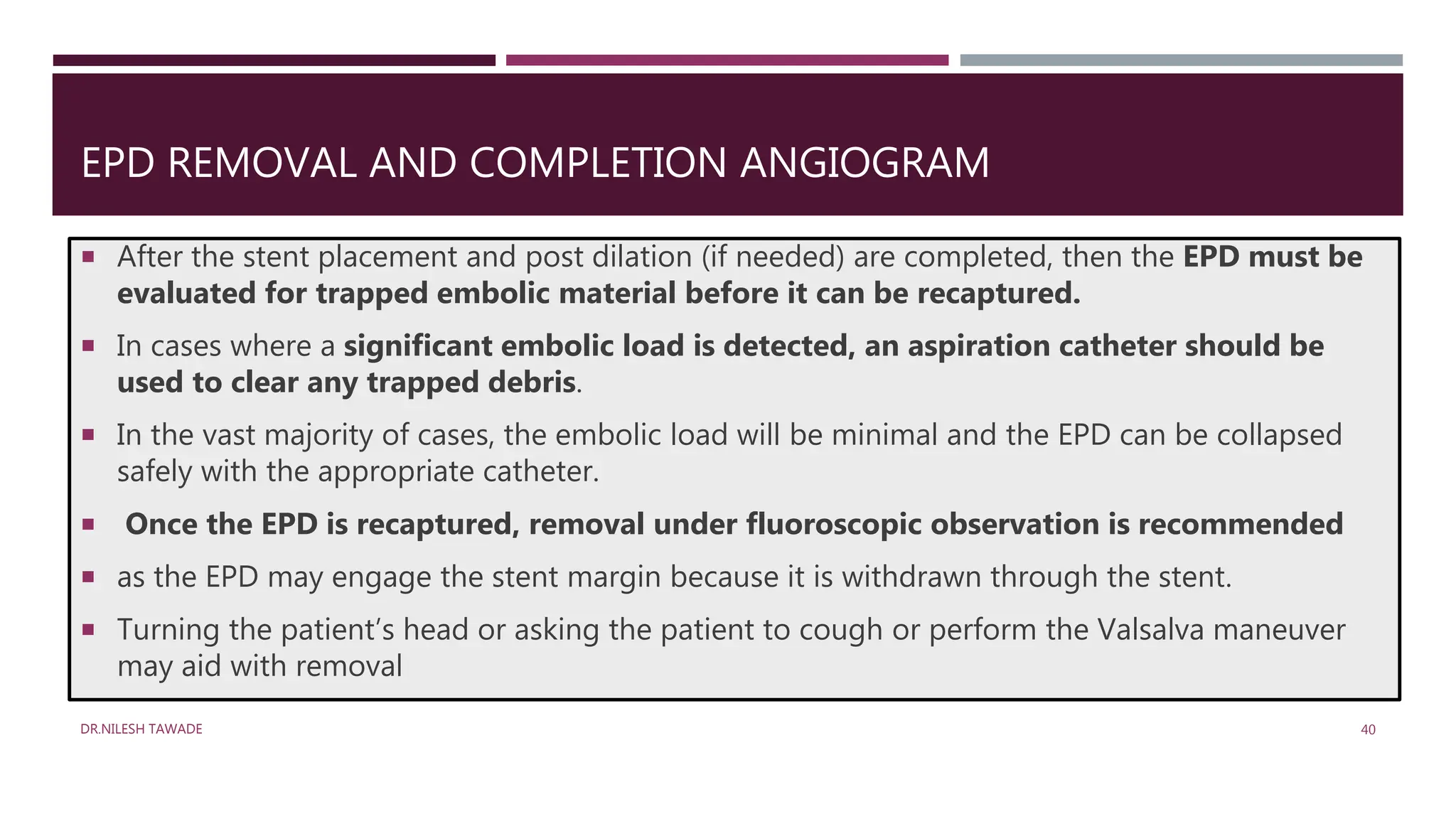This document discusses carotid artery stenting as an alternative to carotid endarterectomy for treating carotid artery stenosis. It provides details on:
1) Clinical trials that have established carotid stenting as an equivalent option to carotid endarterectomy for reducing risk of stroke, with some trials finding stenting superior for certain patient groups.
2) Guidelines from organizations like the ACC/AHA that recommend carotid stenting as a Class I or IIa option for symptomatic and select asymptomatic patients.
3) The procedure of carotid artery stenting, including patient preparation, diagnostic arteriogram, techniques for embolic protection and stent placement.





![CLINICAL TRIALS
For average-surgical-risk patients, CREST (Carotid Revascularization Endarterectomy Versus Stenting
Trial) randomized 2,502 symptomatic and asymptomatic patients and found no difference between
CAS and CEA for the combined endpoint of stroke, death, and MI or the rate of post-procedural
ipsilateral stroke after 10 years of follow-up.
In the CEA group, there was an excess of perioperative heart attacks, which was associated with a 3.5-
fold increased risk of death (hazard ratio [HR] 0.50 [0.26-0.94]; p = 0.03) at 4 years.
DR.NILESH TAWADE 6](https://image.slidesharecdn.com/carotidarterystenting-181220042512-231115220210-6cee127e/75/carotidarterystenting-181220042512-pdf-6-2048.jpg)
![CLINICAL TRIALS
The clinical equipoise for CAS and CEA demonstrated in CREST was recently confirmed by ICSS
(International Carotid Stenting Study), a large multicenter, international RCT involving 1,710 patients with
symptomatic carotid artery stenosis.
The primary endpoint, the cumulative 5-year risk of fatal or disabling strokes, did not differ between
CAS and CEA (6.4% vs. 6.5%; HR 1.06 [0.72-1.57], p = 0.77).
DR.NILESH TAWADE 7](https://image.slidesharecdn.com/carotidarterystenting-181220042512-231115220210-6cee127e/75/carotidarterystenting-181220042512-pdf-7-2048.jpg)

![THE 2011 ACC/AHA GUIDELINES FOR CAS
CAS was recommended as an alternative to CEA in average-surgical-risk
symptomatic patients when the anticipated risk of periprocedural stroke or
mortality is <6% (Class I, Level of Evidence [LOE] B)
They also preferred CAS to CEA when carotid lesions were anatomically
unfavorable (i.e., in cases of restenosis, high cervical or intrathoracic lesions, or
following radiation therapy) (Class IIa, LOE B).
Finally, they recommended that CAS may be considered in highly selected
asymptomatic patients with ≥60% angiographic stenosis (Class IIb, LOE B).
DR.NILESH TAWADE
9](https://image.slidesharecdn.com/carotidarterystenting-181220042512-231115220210-6cee127e/75/carotidarterystenting-181220042512-pdf-9-2048.jpg)


































